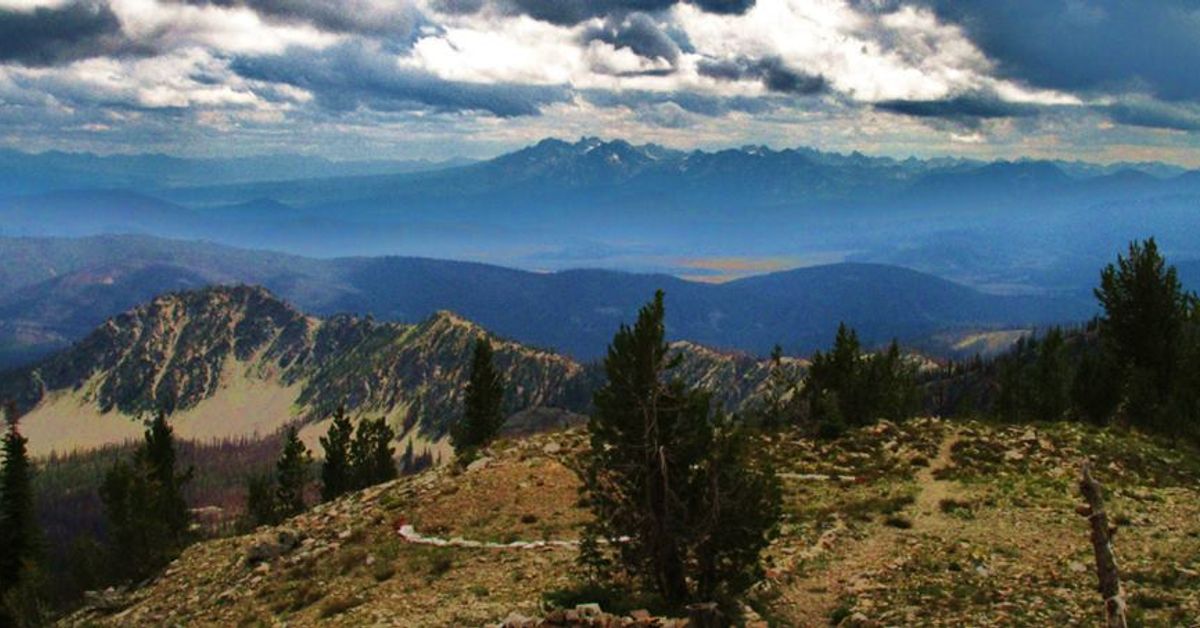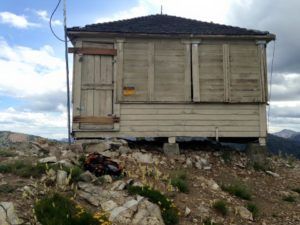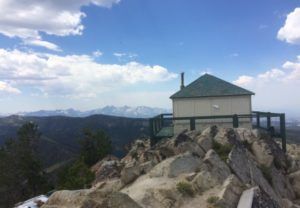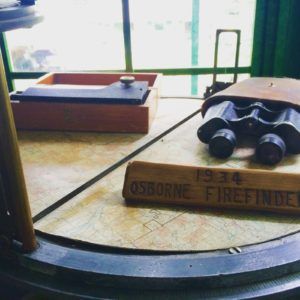
Fire Lookouts and the People Inside
Photo Credit: Kialey Day
Fire lookouts are an important part of our public land history. These buildings that are precariously perched atop mountains that oversee the whole area hold stories that go untold, and see so many things many people wish to never witness. The natural elements, the animals, and the people create a unique and one of a kind of experience for not only the building itself, but also those that live in there during the fire season. These people can see the vast majority of the forest. They oversee it all, hardly ever see other people, and are some of the kindest folk I have ever met. It takes a lot in order to look after a fire lookout. You have to be comfortable in all kinds of weather, in being alone for long periods of time, and being awake at insane hours during a storm in order to ensure that if a fire does break out, you have connection to the ground immediately. However, how did all of this start in the Sawtooth area?
View from Ruffneck Lookout.
Originally, the fire lookouts were not the buildings that we not see. They were tree lookouts, with either ladders spiraling around the tree or large spikes that lookouts would climb up. Eventually buildings were constructed in order to make it a little easier. William Horton was one of the first lookouts in the Sawtooth region. He was a ranger here, who did a little bit of everything, from range work to fire work. He ran the forest, and made sure that if a fire broke out, he would be there on the front line to help stop it.

Photo Credit: Bethany Unger: Horton Peak Lookout
William Horton lived in the old ranger station that is now at Pole Creek, and from there would go up to what is now Horton peak, back down, and all around the Sawtooth Forest. He worked hard to protect this area. However, he was not the only fire lookout here in Idaho. By the 1930s there were over 900 fire lookouts all across the state. We had the highest amount of lookouts in the entire country. These lookouts were usually staffed from June until late October, fire season.

After World War II, the use of these lookouts started to dwindle. We had planes now, so why staff someone to sit on top of a mountain all season? Ray Kresek, the author of “Fire Lookouts of the Northwest” said “Nothing is more efficient than someone sitting in a lookout tower twenty-four hours a day and someone sitting in another lookout five or ten miles away to be able to triangulate a cross shot with the fire finder on a smoke. Nothing is more efficient than that.” However, the use of aircrafts is effective in its own ways. The Osborne Fire Finders were used in order to pinpoint the exact location of a smoke plume. They would triangulate where the fire is, and then tell dispatch where to send people. This job is incredibly important. If they do not get the correct coordinates for the fire, then they have wasted the fire crews’ time, and most likely allowed for the fire to grow.

Right now there is only a small handful of staffed fire lookouts in Idaho. Most of the lookouts now have been renovated for renting, restored for historical purposes, or allowed to fall apart and become a part of the earth again. However, visiting these lookouts is incredible. Every lookout has its own story, its own history. Right out of Stanley there are a few that you can visit. Some are: Lookout Mountain in the White Clouds, Horton Peak in the Boulders, and Ruffneck Lookout in the Frank Church. All of these trails are by no means easy, but they are rewarding.